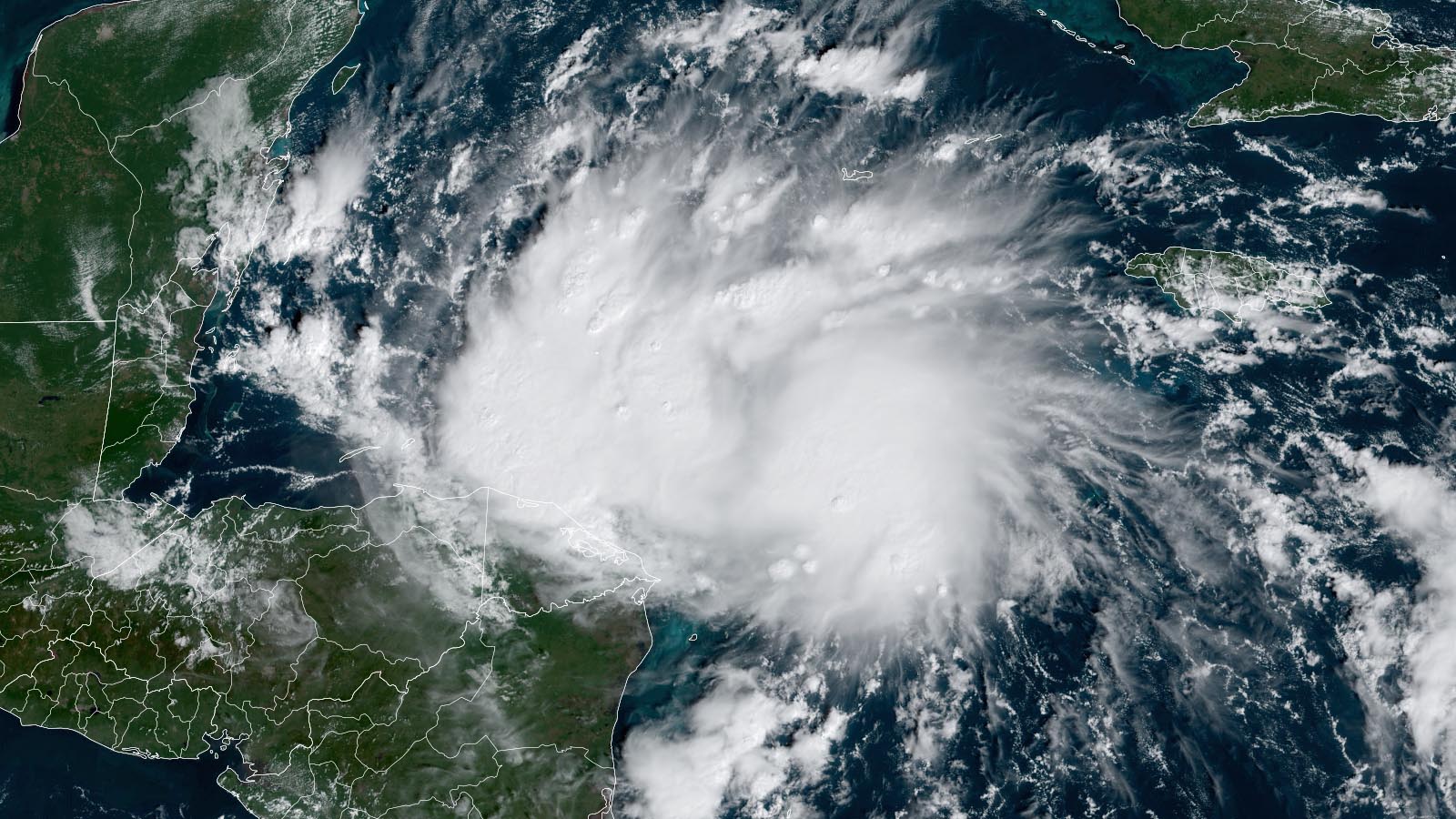The Hurricane Hunters found that Tropical Storm Lisa was steadily intensifying in the Caribbean waters just north of Honduras on Tuesday, and the storm is predicted to hit Belize on Wednesday evening as a category 1 hurricane.
At 11 a.m. EDT Tuesday, Lisa was centered about 430 miles east of Belize City, Belize, heading west at 14 mph, with top sustained winds of 60 mph and a central pressure of 1,001 mb. Satellite images late Tuesday morning showed that Lisa was much more symmetric in shape than on Monday, with heavy thunderstorms that were bringing heavy rains to northern Honduras.
Forecast for Lisa
The track forecast for Lisa is relatively uncomplicated, with a strong ridge of high pressure to its north forcing a mostly westward motion, bringing Lisa to a landfall in Belize. The models are in good agreement on Lisa’s forward speed, with the storm expected to make landfall on Wednesday evening.
Conditions will be favorable for intensification until Lisa makes landfall, with sea surface temperatures of 29-29.5 degrees Celsius (84-85°F) and low to moderate wind shear of 5-15 knots. The atmosphere surrounding the storm is relatively dry (a midlevel relative humidity of 60%, forecast to increase to 70% by Wednesday), and this dry air should limit Lisa’s potential for rapid intensification. The 12Z Tuesday run of the SHIPS and DTOPS models gave Lisa a 26% chance by Wednesday morning of meeting the definition of rapid intensification – a 35-mph increase in winds in 24 hours. The SHIPS model gave Lisa a 15% chance of becoming a major hurricane with 120 mph winds before landfall. Heavy rains of 4-6 inches, a storm surge of 4-6 feet, and damaging hurricane-force winds will all be significant hazards in Belize from Lisa.
Belize has only been hit by two tropical storms and one hurricane in the month of November since records began in 1851. The only hurricane was an unnamed category 2 storm which made landfall on Nov. 9, 1942. The second-latest hurricane on record to hit Belize was category 4 Hurricane Hattie, which made landfall on Oct. 31, 1961.
Tropical Storm Martin forms in the central Atlantic
A nontropical low-pressure system, located in the central Atlantic a few hundred miles northeast of Bermuda, gained enough heavy thunderstorm activity near its center to be named Tropical Storm Martin at 11 a.m. EDT Tuesday. Martin’s formation was aided by unusually warm sea surface temperatures of 25-25.5 degrees Celsius (77-78°F), which are over two degrees Celsius (3.6°F) above average (Figure 3).
Conditions are favorable for intensification, with cold air aloft creating enough instability to allow Martin to become a category 1 hurricane with 80 mph winds by Wednesday night. Martin will be short-lived, though – steering currents will take the storm to the northeast at a forward speed increasing to 30 mph by Wednesday, carrying Martin over waters of just 21 degrees Celsius (70°F) by Thursday morning. These cold waters are expected to cause Martin to transition to a hurricane-strength extratropical storm on Thursday. Martin is not a threat to any land areas.
Martin’s formation comes about a week after the average development date of the Atlantic’s 13th named storm of the year, October 25. This season’s activity now stands at 13 named storms, five hurricanes, and two major hurricanes, with an Accumulated Cyclone Energy index only 73% of average for the date. The 1991-2020 averages for November 1 are 13.5 named storms, 6.6 hurricanes, and three major hurricanes. So despite the catastrophic rampage of Hurricane Ian, the Atlantic as a whole is having a near-average to slightly below-average season by most metrics.
Website visitors can comment on “Eye on the Storm” posts (see comments policy below). Sign up to receive notices of new postings here.


